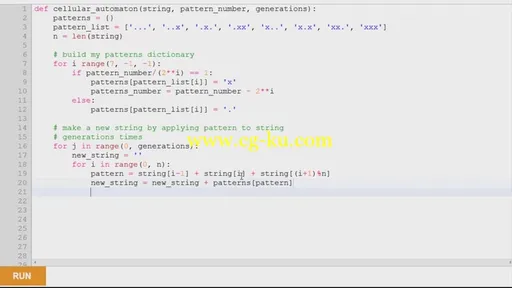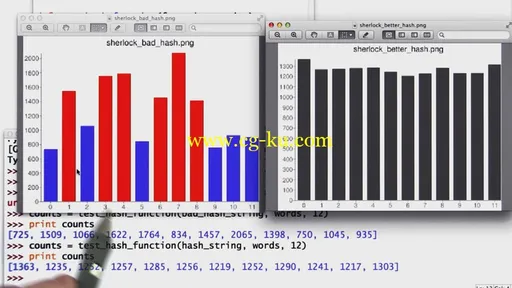
Udacity - Intro to Computer Science - Build a Search Engine & a Social Network
MP4 | AVC 995kbps | English | 852x480 | 30ps | AAC stereo 96kbps | 6.57 GB
Genre: Video Training
In this introduction to computer programming course, you’ll learn and practice key computer science concepts by building your own versions of popular web applications. You’ll learn Python, a powerful, easy-to-learn, and widely used programming language, and you’ll explore computer science basics, as you build your own search engine and social network. You’ll learn the programming language Python, and you’ll explore foundational concepts in computer science. Most importantly, you’ll start thinking like a software engineer by solving interesting problems (how to build a web crawler or a social network) using computer programming. This course is a first step into the world of computer science, and whether you want to become a software engineer, or collaborate with software engineers, this course is for you. You’ll be prepared for intermediate-level computer science classes when you’ve mastered the concepts covered in this course.
Build a Search Engine
Throughout this course, you’ll build a search engine by learning about and producing key search engine components including a crawler, an index and a page rank algorithm. As you build these pieces, you’ll be learning about and practicing computer science skills that will ready you for intermediate level computer science courses.
Build a Social Network
At the end of the course we will give you a set of relationships (i.e. strings of phrases like “Dave likes Andy, Kathleen and Kristy”) and you will use your new computer science skills to organize these relationships into a social network. With your new social network, you can explore relationships and gain insight into how you fit into your own social networks.
Syllabus:
Lesson 1: How to Get Started
Interview with Sergey Brin
Getting Started with Python
Processors
Grace Hopper
Variables
Strings and Numbers
Indexing Strings
String Theory
Lesson 2: How to Repeat
Introducing Procedures
Sum Procedure with a Return Statement
Equality Comparisons
If Statements
Or Function
Biggest Procedure
While Loops
Print Numbers
Lesson 2.5: How to Solve Problems
What are the Inputs
Algorithm Pseudocode
Optimizing
Lesson 3: How to Manage Data
Nested Lists
A List of Strings
Aliasing
List Operations
List Addition and Length
How Computers Store Data
For Loops
Popping Elements
Crawl Web
Lesson 4: Responding to Queries
Data Structures
Lookup
Building the Web Index
Latency
Bandwidth
Buckets of Bits
Protocols
Lesson 5: How Programs Run
Measuring Speed
Spin Loop
Index Size vs. Time
Making Lookup Faster
Hash Function
Testing Hash Functions
Implementing Hash Tables
Dictionaries
Modifying the Search Engine
Lesson 6: How to Have Infinite Power
Infinite Power
Counter
Recursive Definitions
Recursive Procedures
Palindromes
Recursive v. Iterative
Divide and Be Conquered
Ranking Web Pages
Lesson 7: Past, Present, and the Future of Computing
Past of Computing
Computer History Museum
First Hard Drive
Search Before Computers
Present of Computing
Slac and Big Data
Open Source
Future of Computing
Text Analysis
Energy Aware Computing
Computer Security
Quantum Computing

